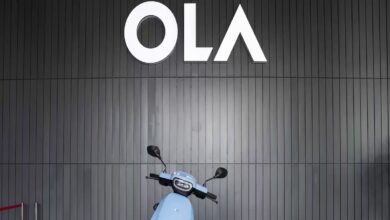Inside Stanford Rebuild: How the B-school is helping entrepreneurs innovate for COVID-19 recovery
Experts, educators, and economists unanimously agree that they’ve never encountered a crisis like this — one that has not only stalled economies and invited the worst of recessions, but also disrupted the way we live, work, and interact.
Even though economies around the world have started opening up in varying capacities, businesses and entrepreneurs are faced with unforeseen challenges, many of which could be specific to geographies, markets, and local communities.
These micro problems need micro solutions and native innovations. To stimulate post-pandemic innovation, expedite ideas to action, and put the world on the path of economic recovery, the Stanford Graduate School of Business (GSB) has launched the Stanford Rebuild programme for entrepreneurs across the world.
In a joint interview with YourStory, Deborah Whitman, Director – Center for Entrepreneurial Studies, Stanford GSB, and Stefanos Zenios, Faculty Director – Center for Entrepreneurial Studies, Stanford GSB, talk about how the programme will guide entrepreneurs to build products in a post-pandemic world, sectors that need maximum attention, and why innovation should be local and a response to the crisis we see around us.
What are the objectives of the Stanford Rebuild programme, and what impact do you look to create?
Deborah Whitman: Stanford Rebuild is a response to the disruptions the COVID-19 pandemic has created in our societies, economies, and families.
People at Stanford began to think about how we could help make a positive contribution to help communities recover more quickly and robustly. We saw an opportunity to offer our entrepreneurial educational resources to support innovators in moving from ideas to action to accelerate our recovery from the COVID-19 pandemic.
The programme combines two resources to educate and encourage innovators:
Stanford Embark: It an interactive online entrepreneurial toolkit that guides people through the process of understanding customer needs, and evaluating potential solutions to move their ideas forward toward action.
The programme was created by three Stanford GSB faculty members with expertise in entrepreneurship, design thinking, and innovation. Participants use the Embark educational toolkit during an eight-week sprint to test and refine their solutions.
‘Get Inspired’ Events: This is a series of talks featuring business leaders and academic experts from across industries. These talks will also be available for participants to watch later in the programme, so those who missed the kick-off week will have access to these resources.
Who are the key stakeholders Stanford GSB is working with? Elaborate the nature of the collaboration.
DW: The programme spans all seven Stanford schools, and involves a mix of staff, faculty, and students. Some collaborators include Stanford Graduate School of Education, Stanford Center for Innovation in Global Health, Stanford Seed, Stanford Technology Ventures Program, and others.
Each of the collaborating groups has brought unique perspectives and areas of expertise to the table to determine how to make Stanford Rebuild a success, from defining the programme’s structure and identifying the innovation themes, to determining how to meaningfully support and guide participants so that they feel empowered to accelerate the recovery from COVID-19.
In addition, business leaders and academics, including some Stanford alumni, offered their time to participate in the ‘Get Inspired’ talks.
How do you assess the global economy four months since WHO declared the pandemic? What are the key concerns that need addressing?
Stefanos Zenios: COVID-19 has impacted all our worlds, some more than others. Every sector has been disrupted by the pandemic, including our healthcare and education systems, hospitality industry, and tech. As we begin to emerge from the worst of the pandemic and think about what the road to recovery looks like, the key concerns will look different for each community.
We’re encouraging Stanford Rebuild participants to look at the challenges their communities are facing and think about the potential for impact as they develop their solutions to aid in COVID-19 recovery. Four areas where we see an acute need are organisations, healthcare systems, the workplace, and human wellbeing.
As economies begin to reopen, we need to think about what the “new normal” looks like for school systems and organisations, in particular, where the norm pre-COVID-19 was for large groups of people to gather together in the same room.
Which have been the worst-affected sectors, and what is the potential timeline for their recovery?
SZ: We know the impact of COVID-19 will be felt across the globe for years to come. We’ve seen commentary from experts who estimate that the projected recovery will range from 12 to 36 months, and maybe even longer.
One area that was immediately and deeply affected by the pandemic was the travel and tourism industry. Even now, as economies are beginning to reopen, people are still exercising more caution as they’re no longer able to travel with the ease that they used to — there are many things to consider including guidelines and regulations.
The pandemic is amplifying systematic inequalities in our societies. Vulnerable populations have been affected more severely: minorities, people with health issues, and the poor. We encourage the innovators at Rebuild to focus on these needs of these communities and not leave them behind in the post-COVID-19 world.
What does the Stanford entrepreneurial toolkit consist of? How will it help kickstart innovation in a post-pandemic world?
DW: Stanford Embark is a step-by-step guide to help participants explore the viability of their idea and assess how to bring it into the marketplace. The toolkit will guide them through a series of steps to clarify their challenge area, form potential solutions, and use hypothesis-based testing to evaluate and refine their solutions.
We hope teams will bring to market new solutions, products, and services that help both generate economic growth and solve some of the challenges societies will face as we recover from the pandemic.
Any healthcare-specific innovations that the programme focuses on?
DW: We’ve identified four areas where we see the most need when we think about the road to recovery from COVID-19, and reinforcing our healthcare systems is one. Participants will look at questions such as:
- How can we ensure healthcare systems have an adequate supply of PPEs and ventilators if there is a second wave or a future pandemic?
- How can we make PPEs more comfortable for those who must wear it for long periods of time and better-fitting for people of different sizes/shapes?
- Is it possible to make testing so easy, responsive, and accurate that it can be performed routinely, making it safer for people to return to educational and work facilities?
- How can we increase the capacity and effectiveness of telemedicine to deliver care without direct contact?
How will recovery and rebuilding differ across geographies? Are developing economies like India more challenged?
SZ: The challenges faced by different communities and countries as we emerge from COVID-19 are different, so the road to recovery will look different as well. We’re encouraging Stanford Rebuild participants to think broadly about the disruptions they see around them and the barriers their communities face as they look to make an impact and develop new products, services, and solutions for their new “normal.”
Countries around the world are in different stages of reopening their economies so we’re beginning to see what works and what doesn’t. Innovators can not only learn from how different regions responded to the pandemic, but also how other countries responded. There are forced experiments happening around the world, and innovators can learn from these experiments and design a positive path forward.
How are Indian entrepreneurs shaping up to the programme? Any ideas that you’re nurturing specifically for India or working with the govt?
DW: Stanford Rebuild is open to innovators anywhere in the world. We’ve already seen many participants from India join the programme, and we’re looking forward to seeing them make progress on their projects. It is a programme being shared directly with individuals; we have not worked with state authorities or governments.
However, we hope that people working in the government sector may have ideas they will bring to and move forward as part of Stanford Rebuild.
What do you make of the ‘hybrid workplace’ model that is becoming the new normal? What systemic changes will businesses have to go through to enable it?
DW: Some portion of office workers may continue to work from home full or part-time for many months to come. The interesting question will be whether the pandemic will fundamentally change the approach to remote work over the long term.
One of the areas we think innovators may find fruitful to explore is how the needs of businesses and knowledge workers change in a world where remote work becomes much more common. The kinds of new needs that arise in the wake of such a change can create very interesting business opportunities.
Finally, is the COVID-19 impact on the global economy comparable to that of the Great Depression of the 1930s or subprime crisis of 2008-09?
SZ: This pandemic is something that we haven’t seen before, and recovering from this crisis will bring a wide array of new challenges to organisations, people and ways of life such as providing equal access to healthcare to underserved communities, bridging the digital divide or addressing the mental health impact of social distancing.
There are many challenges and opportunities before us as we work towards a post-COVID-19 future, and we hope to support innovators to address these challenges and develop solutions that help change lives in this new reality.
Source: Yourstory




